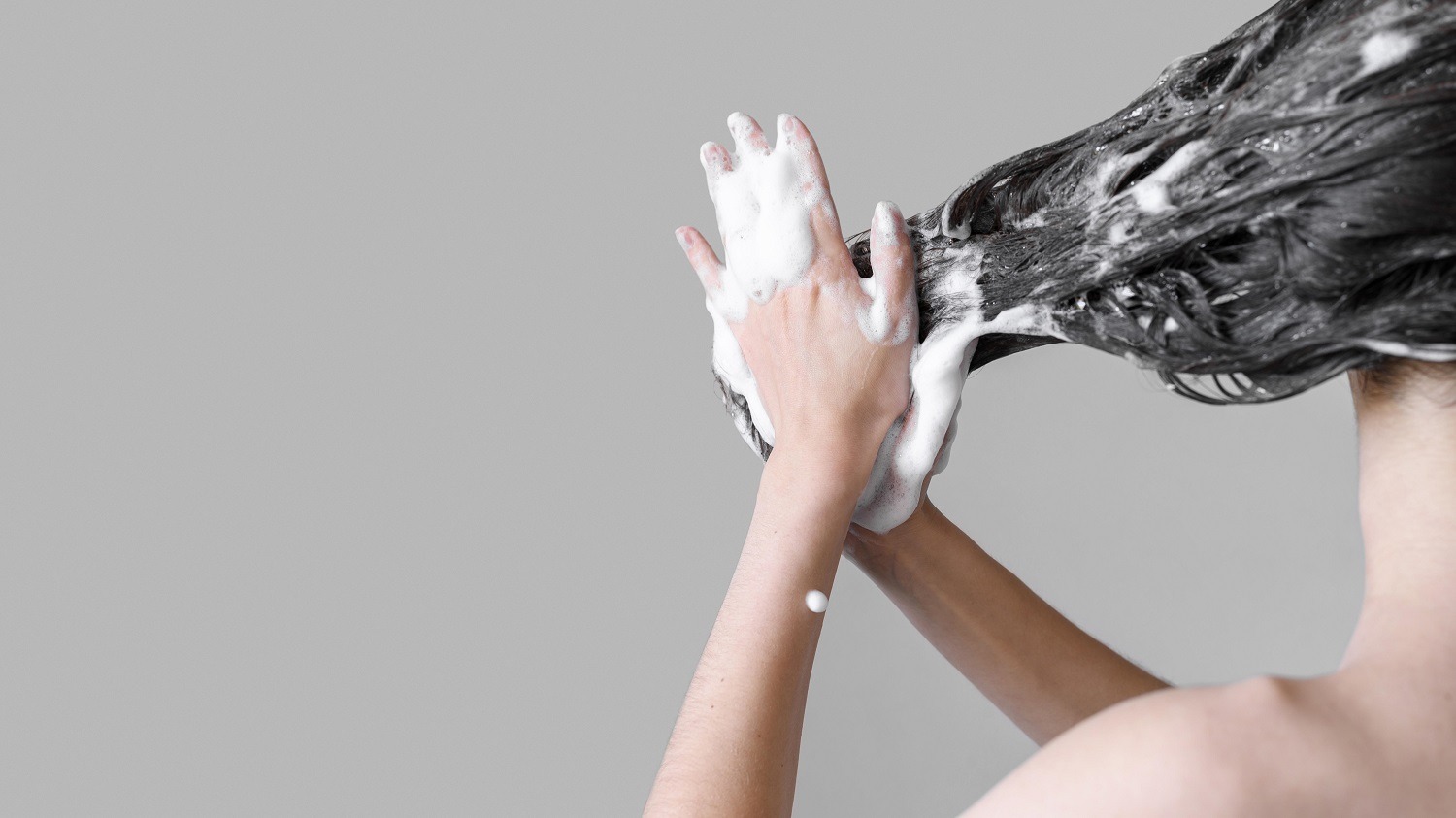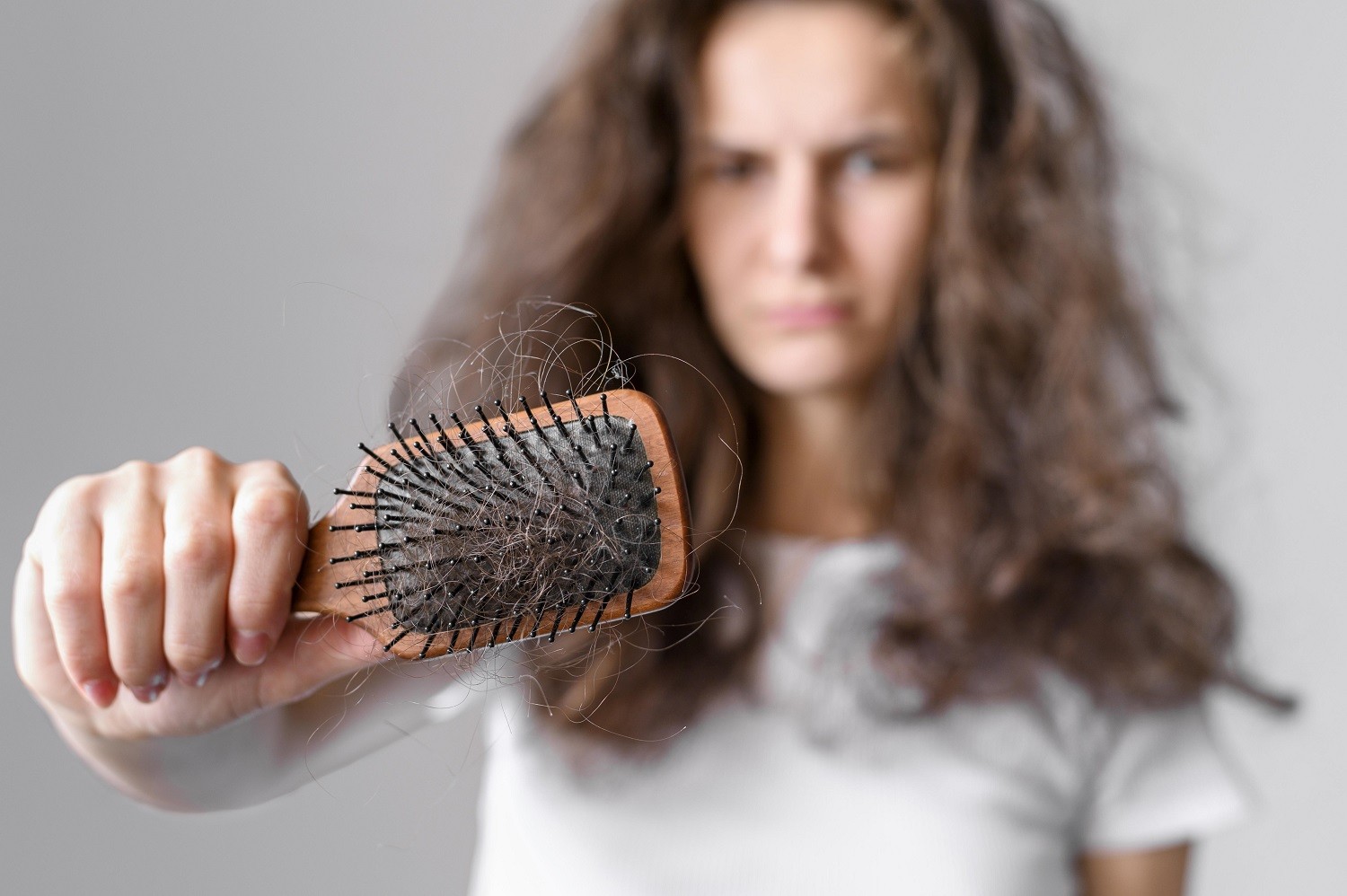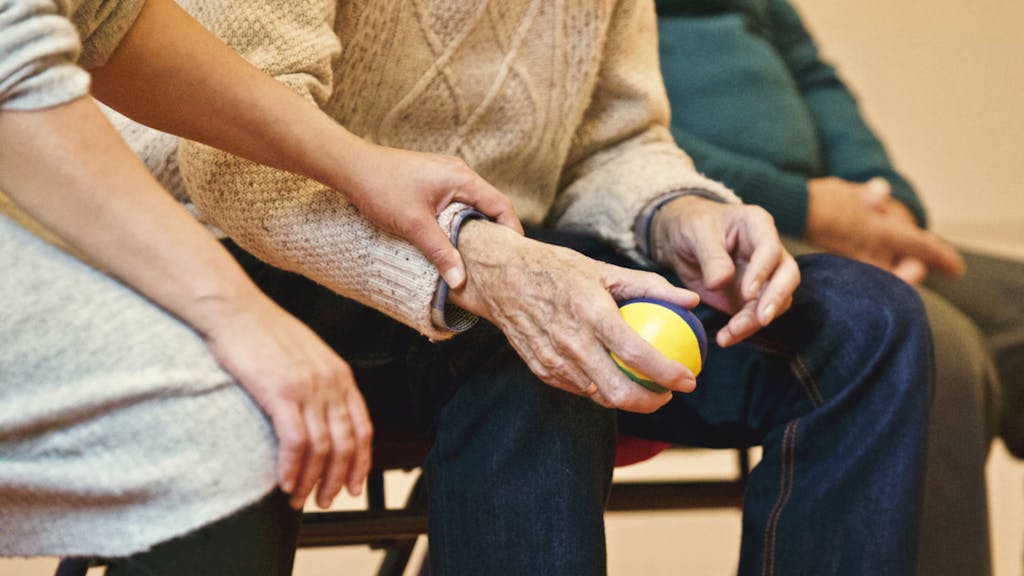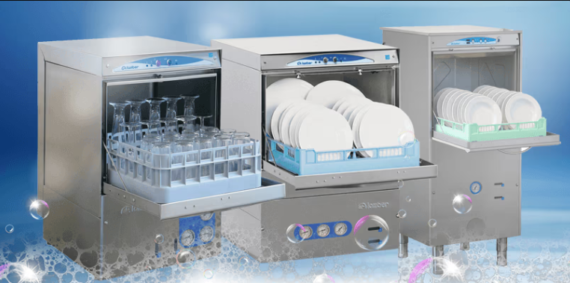Static hair: causes and home remedies

How to Get Rid of Static From Hair: Causes and Quick-Fix Tips
Electrifying hair is a problem for many women, especially in winter. Discover the causes of static hair and home remedies to help you deal with them. Electrifying hair is a big problem… under the hat badly, but without it even worse. When you go out in the frost without a hat, the blood vessels in the scalp shrink and fewer nutrients reach the hair follicles – the hair weakens. The cold also slows down the sebaceous glands, and when there is a less protective layer of fat on the hair, they are more susceptible to damage.
In turn, under a warm hat, the scalp overheats and becomes greasy, and these are good conditions for the fungi Pityrosporum responsible for dandruff. In addition, oily hair looks stale, flaky and dull.
Hair becomes electrified when rubbed by synthetic material, most often this happens when we brush it intensively, remove and put on clothes over the head or wear a hat. If the hair is positively charged, they repel each other, which causes a halo around the head, while they cling to negatively charged materials. We don’t have much to fight with the laws of physics, but not always our hair will be just as susceptible to the effect of electrification, we also have at our disposal equipment and cosmetics, which the situation of the advantage of positive ions in the hair structure helps reverse.
Cure hair problems with Yoga and Ayurveda in an effective manner. Learn Yoga for healthy Hair from YTTI Rishikesh.
Static Hair: Causes
If the static hair means that you don’t want to wear a hat in the winter, then first of all look at their condition, as well as care habits. Dry and damaged hair will be more prone to charging and “rearing”. Drying with hot air and long combing also promote electrification. Added to this are artificial materials for clothes and hats or changes in temperature and humidity. If all of the above-mentioned situations sound familiar, it’s time to change your hair care routine.
Static Hair: Home Remedies
Proper Washing

If your hair is greasy, wash it even daily. Do not be afraid that you will harm them – by removing excess sebum, you will let the skin breathe. Use gentle shampoos tailored to the needs of your hair. Note whether dandruff has appeared – both of these ailments often occur simultaneously. Then wash your head with anti-dandruff shampoo, e.g. zinc compounds or tar, which reduce the multiplication of yeast. Rinse off the shampoo with lukewarm water so as not to stimulate the sebaceous glands.
Regular oiling can also affect the condition of your hair. The products we use are of great importance, if the hair is dry and weak it is worth reaching for the right products, moisturizing conditioners against frizz may work.
Rather, they should not be conditioners without rinsing, because this type of cosmetic can burden the hair. Because a hat often causes hair to get static or stick to the head, try moisturizing and smoothing conditioners (e.g. with silk) or adding volume (with polymers) to your hair.
Apply the conditioner over the entire length of the hair, starting a few centimetres from the scalp.
Hair washing is also an important moment because of the high temperature of the water opens the cuticles, increasing their susceptibility to friction, and the lower temperature closes them. It is good to wash your hair with lukewarm water or rinse with colder water than the one you used to wash.
Proper Drying
Dry your hair thoroughly before leaving home. Frosty air can disturb the structure of wet hair, and then they lose their shine and become more static. If you wash your hair in the morning and need to use a dryer, set a stream of cool air. Although drying will take a little longer, you will not increase the activity of the sebaceous glands, and the hair will remain smooth and well moisturized inside.
Dry them with a rather cool stream of air, combing the strands with your fingers and a brush. Try to tilt your head forward – then the hair “bounces” from the skin and the hair gets more volume.
In addition, you can equip a dryer with an ionization function that emits negative ions, neutralizing positive charges, and thus reduces the risk of static electricity.
Also Read: Are Almonds Good For You To Eat
Appropriate Combing

The key moment in which the irritating effect of hair lifting together with the brush or comb often occurs. In this case, a change of brush, made of synthetic materials, to one made of organic materials – wood and natural bristles – can help.
In addition, you can apply a little oil, serum or conditioner to the brush to comb your hair. Antistatic hair mists can also be used here. There are also ionization brushes that eliminate the problem of static electricity, leaving your hair smooth.
Appropriate Stylization
The hair ends can be rubbed with oiling and emollient preparation containing ingredients such as oils, butter or fatty alcohols. It will weigh the hair down and create a protective layer on the surface, preventing water loss. Be careful with the number of such products, too much will cause the hair to clap and clump into pods. The use of hairspray is also one of the solutions to the problem of electrifying. You can even pee with it inside the cap.
A large amount of foam, gel or varnish can irritate the scalp and worsen dandruff, as well as overburdening the hair. Choose cosmetics for thin and delicate hair because they are lighter and contain more care substances.
If the hair is electrified and you want to smooth it quickly, drag it over with moistened hands because the water neutralizes electric charges.
Opting Out of Synthetic Materials
Sweaters, turtlenecks, hats, what comes into contact with our hair should be made of natural materials. The electrifying of artificial materials can be helped by using liquids for rinsing clothes or just the hairspray just mentioned.
Buy a warm and airy hat, so your scalp doesn’t sweat and breathe. Remember that hair gets electrified when rubbed on artificial fibres because it produces large amounts of negatively charged particles that repel each other. So buy a hat made of natural wool or cotton.
Daily Habits that Damage your Hair
Do you use good cosmetics, do you remember to apply a conditioner after each hair wash, do you support the mask with your hair, and yet your hair still causes you problems? If they are dry, damaged, you have problems with the scalp or split ends, you may be making a mistake somewhere.
Hair can absorb water up to 30%. their own mass, under the influence of heat they can lengthen or change shape. One healthy and thick hair is able to support a weight of 250 g.
Their wet curl can stretch up to 30 per cent. length. They are extremely resistant – but this does not mean that they are indestructible. We can contribute to their damage ourselves, in addition completely unknowingly. What is wrong with them?
Too tight. Tying hair in a ponytail, combing it in a braid or braiding in a bun at the top of the head, wearing tight bands – all this causes that the hair is subjected to excessive mechanical pressure and stress, which can result in damage to their structure (and consequently breaking), as well as damage to the bulbs. It can also lead to so-called traction alopecia caused by prolonged pressure.
Frequent washing with the wrong shampoo. The use of shampoos not suited to the needs of the scalp and hair rinses the protective film from them, which causes the hair to dry out, and the scalp – greasy. If you have a problem with choosing the right shampoo, ask your hairdresser for help.
It is better to give up preparations containing strong detergents such as SLS and SLES. Hair should be washed twice: one wash will not remove all impurities from them, including the remains of styling products. During the first wash, we apply shampoo to the hair, during the second – to the scalp.
Washing with too warm water. It opens the cuticles and flushes out the lipid protective layer, which causes the hair to dehydrate, become dry, break easily. Washing with lukewarm water is much better.
Applying the conditioner to the scalp. It’s a mistake: they contain strong nutrients, oils, silicones, etc. can irritate delicate skin or increase seborrhea – this can only be done if the nutrient label clearly says that it should be massaged into the scalp because it stimulates blood supply to the bulbs or prevents hair loss.
Frequent modelling and hot styling. Hair is damaged by high temperature in any form: also when the heat is emitted by styling tools such as dryers, straighteners, curlers, etc. Such high temperature can damage keratin, which is the protein from which hair is built in as much as 85 per cent.
It is worth limiting their use or using preparations protecting hair against high temperature. If you are not able to opt-out of the dryer, finish each drying with a stream of cool air that will close your parted hair cuticles.
We recommend YTTI Rishikesh’s yoga course for treating health issues naturally.








Comments
Trackbacks & Pingbacks
[…] Also Read: Static hair: causes and home remedies […]